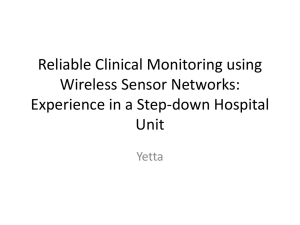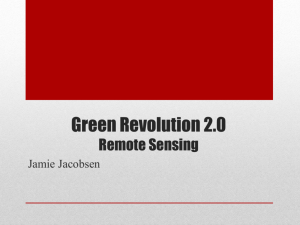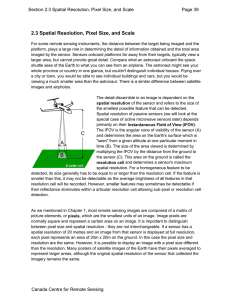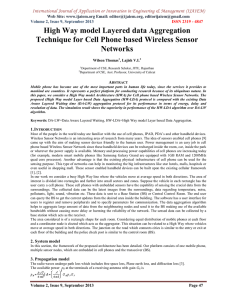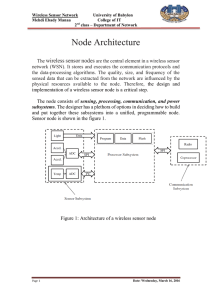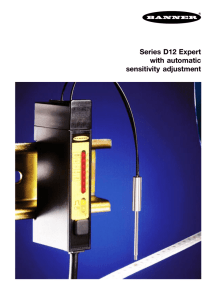WIRELESS SENSOR NETWORKS FOR IN-SITU IMAGE
advertisement
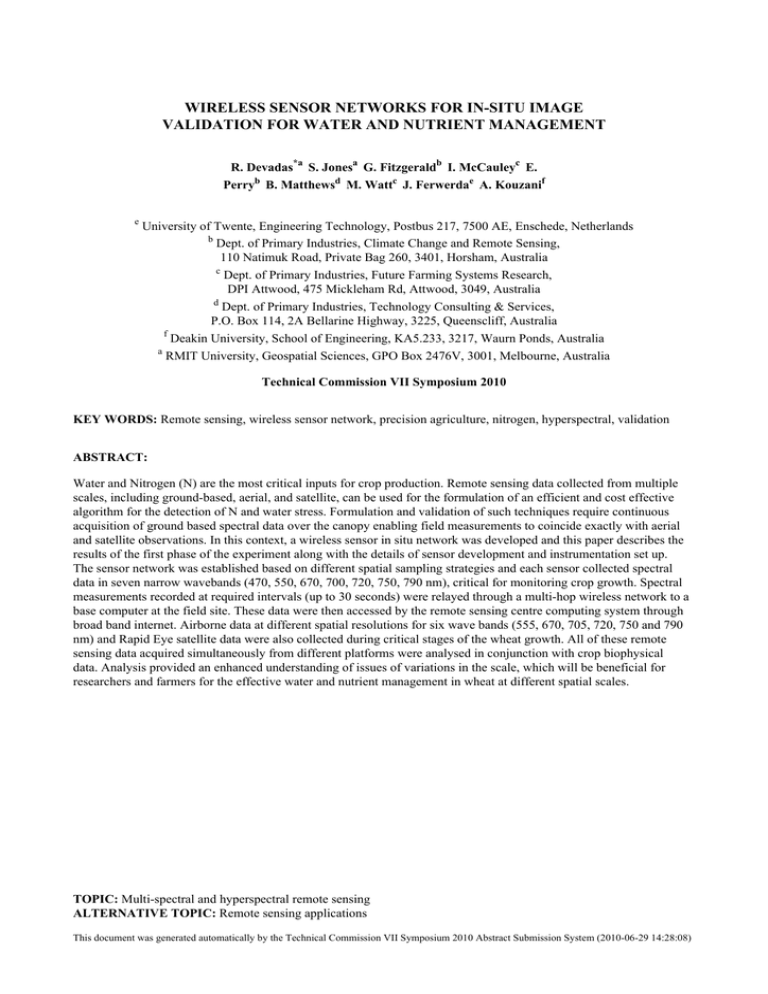
WIRELESS SENSOR NETWORKS FOR IN-SITU IMAGE VALIDATION FOR WATER AND NUTRIENT MANAGEMENT R. Devadas*a S. Jonesa G. Fitzgeraldb I. McCauleyc E. Perryb B. Matthewsd M. Wattc J. Ferwerdae A. Kouzanif e University of Twente, Engineering Technology, Postbus 217, 7500 AE, Enschede, Netherlands b Dept. of Primary Industries, Climate Change and Remote Sensing, 110 Natimuk Road, Private Bag 260, 3401, Horsham, Australia c Dept. of Primary Industries, Future Farming Systems Research, DPI Attwood, 475 Mickleham Rd, Attwood, 3049, Australia d Dept. of Primary Industries, Technology Consulting & Services, P.O. Box 114, 2A Bellarine Highway, 3225, Queenscliff, Australia f Deakin University, School of Engineering, KA5.233, 3217, Waurn Ponds, Australia a RMIT University, Geospatial Sciences, GPO Box 2476V, 3001, Melbourne, Australia Technical Commission VII Symposium 2010 KEY WORDS: Remote sensing, wireless sensor network, precision agriculture, nitrogen, hyperspectral, validation ABSTRACT: Water and Nitrogen (N) are the most critical inputs for crop production. Remote sensing data collected from multiple scales, including ground-based, aerial, and satellite, can be used for the formulation of an efficient and cost effective algorithm for the detection of N and water stress. Formulation and validation of such techniques require continuous acquisition of ground based spectral data over the canopy enabling field measurements to coincide exactly with aerial and satellite observations. In this context, a wireless sensor in situ network was developed and this paper describes the results of the first phase of the experiment along with the details of sensor development and instrumentation set up. The sensor network was established based on different spatial sampling strategies and each sensor collected spectral data in seven narrow wavebands (470, 550, 670, 700, 720, 750, 790 nm), critical for monitoring crop growth. Spectral measurements recorded at required intervals (up to 30 seconds) were relayed through a multi-hop wireless network to a base computer at the field site. These data were then accessed by the remote sensing centre computing system through broad band internet. Airborne data at different spatial resolutions for six wave bands (555, 670, 705, 720, 750 and 790 nm) and Rapid Eye satellite data were also collected during critical stages of the wheat growth. All of these remote sensing data acquired simultaneously from different platforms were analysed in conjunction with crop biophysical data. Analysis provided an enhanced understanding of issues of variations in the scale, which will be beneficial for researchers and farmers for the effective water and nutrient management in wheat at different spatial scales. TOPIC: Multi-spectral and hyperspectral remote sensing ALTERNATIVE TOPIC: Remote sensing applications This document was generated automatically by the Technical Commission VII Symposium 2010 Abstract Submission System (2010-06-29 14:28:08)




